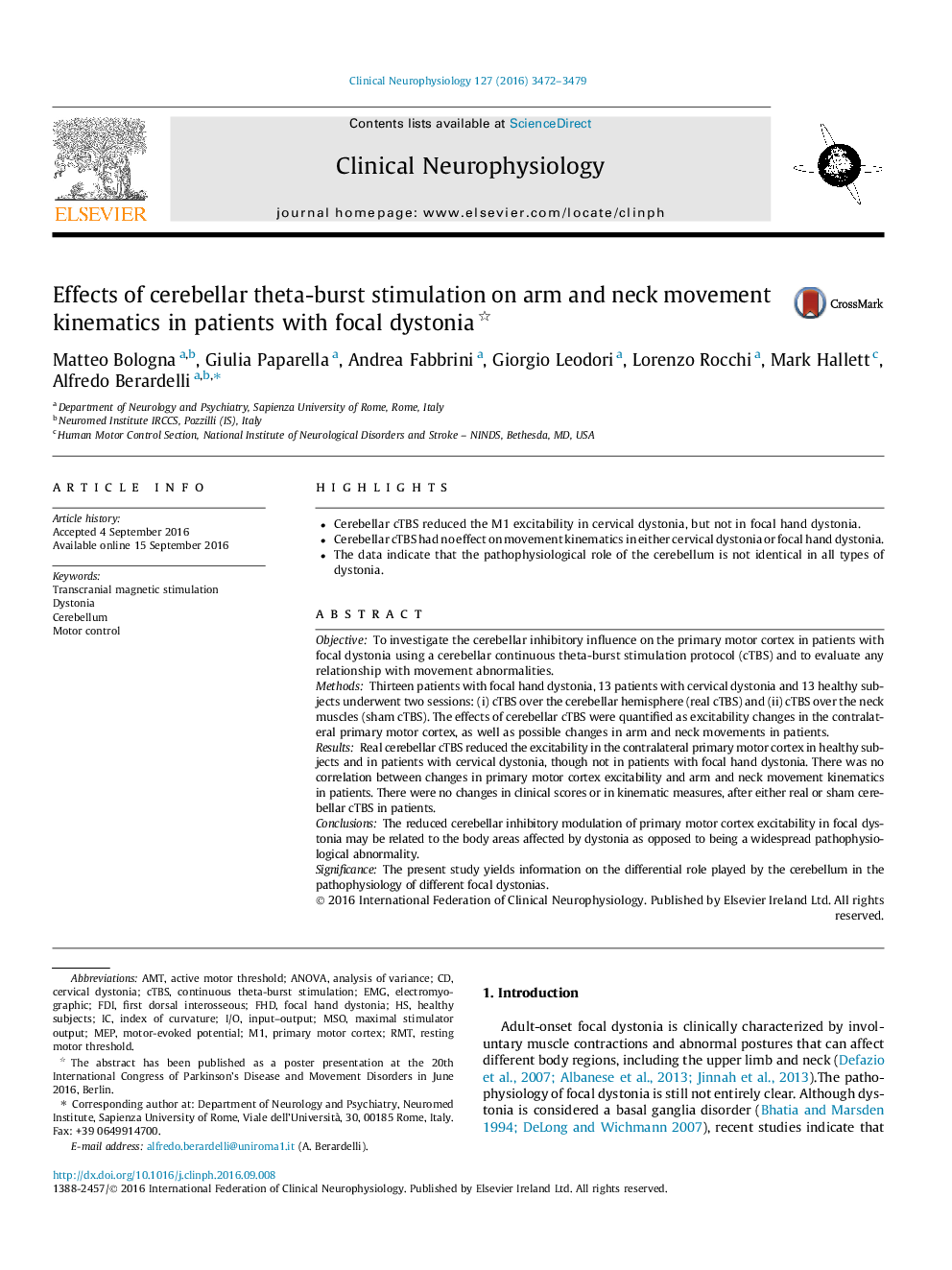| Article ID | Journal | Published Year | Pages | File Type |
|---|---|---|---|---|
| 5627569 | Clinical Neurophysiology | 2016 | 8 Pages |
â¢Cerebellar cTBS reduced the M1 excitability in cervical dystonia, but not in focal hand dystonia.â¢Cerebellar cTBS had no effect on movement kinematics in either cervical dystonia or focal hand dystonia.â¢The data indicate that the pathophysiological role of the cerebellum is not identical in all types of dystonia.
ObjectiveTo investigate the cerebellar inhibitory influence on the primary motor cortex in patients with focal dystonia using a cerebellar continuous theta-burst stimulation protocol (cTBS) and to evaluate any relationship with movement abnormalities.MethodsThirteen patients with focal hand dystonia, 13 patients with cervical dystonia and 13 healthy subjects underwent two sessions: (i) cTBS over the cerebellar hemisphere (real cTBS) and (ii) cTBS over the neck muscles (sham cTBS). The effects of cerebellar cTBS were quantified as excitability changes in the contralateral primary motor cortex, as well as possible changes in arm and neck movements in patients.ResultsReal cerebellar cTBS reduced the excitability in the contralateral primary motor cortex in healthy subjects and in patients with cervical dystonia, though not in patients with focal hand dystonia. There was no correlation between changes in primary motor cortex excitability and arm and neck movement kinematics in patients. There were no changes in clinical scores or in kinematic measures, after either real or sham cerebellar cTBS in patients.ConclusionsThe reduced cerebellar inhibitory modulation of primary motor cortex excitability in focal dystonia may be related to the body areas affected by dystonia as opposed to being a widespread pathophysiological abnormality.SignificanceThe present study yields information on the differential role played by the cerebellum in the pathophysiology of different focal dystonias.
